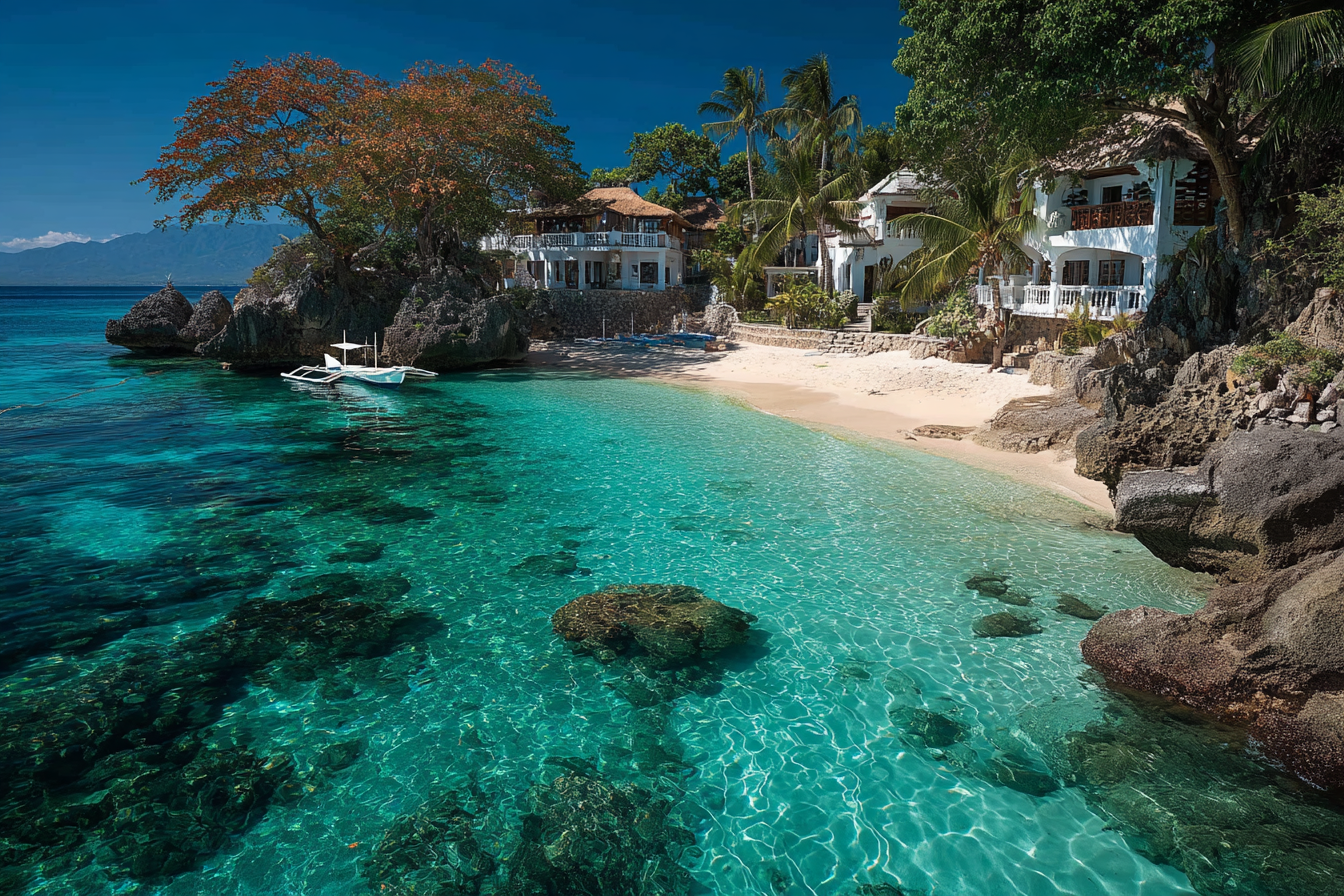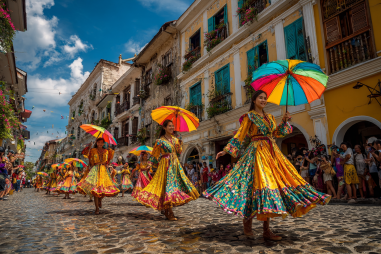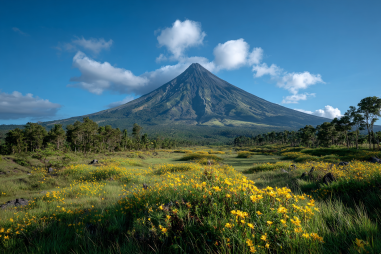Planning a trip to Apo Island is an exciting adventure, especially if you’re eager to snorkel amidst vibrant coral reefs, dive into crystal-clear waters teeming with marine life, or simply explore a tranquil tropical paradise. But when exactly should you visit to make the most of your getaway? Understanding Apo Island’s climate, tourist flow, and sea conditions helps you pick the best time for unforgettable experiences. Whether you prefer lively crowds or peaceful solitude, want to catch seasonal marine wonders, or hope to enjoy perfect weather for hiking, this guide will help you find the ideal moment to pack your bags and head to this stunning Philippine island sanctuary.
Climate Overview of Apo Island
Apo Island, located in the Visayas region of the Philippines, enjoys a tropical climate typical of the country, characterized by warm temperatures year-round. Average daily temperatures generally range from 25°C to 32°C (77°F to 90°F), creating a consistently inviting environment for outdoor activities. The island experiences significant humidity, but ocean breezes often provide a pleasant relief.
Because Apo Island is situated in the central Philippines, it experiences two main seasons influenced by the prevailing wind patterns and the monsoon system— the dry season and the rainy season. Understanding these climate dynamics is key to deciding when the island’s conditions will be most favorable for your favorite activities.
Dry vs. Rainy Seasons Explained
The dry season on Apo Island typically spans from late November through May. During these months, you can expect plenty of sunshine, minimal rainfall, and relatively calm seas. This weather pattern is ideal for beach outings, snorkeling, diving, and exploring the island’s natural beauty. Moreover, the dry season coincides with cooler evenings and lower humidity levels compared to the rainy months, making outdoor adventures more comfortable.
In contrast, the rainy season generally runs from June to October. This period is characterized by frequent rain showers and occasional thunderstorms, thanks to the southwest monsoon. Rainfall can sometimes be heavy, and sea conditions may become rougher, which can hinder water activities or cause cancellations. While the island retains its charm during this time, some visitors may find the weather less predictable and less conducive for snorkeling or diving excursions.
Peak Tourist Periods and Crowd Considerations
Apo Island, though not as crowded as more commercialized destinations, does see a noticeable increase in visitors during certain times of the year. The peak tourist season aligns closely with the dry months, especially from December through March. This period includes the Christmas holiday season and Philippine summer vacation, when local and international travelers alike flock to pristine beaches and dive sites.
During peak season, the island’s facilities, such as accommodations and snorkeling tours, tend to be busier. While the lively atmosphere can be enjoyable for social travelers, those seeking a quieter, more intimate experience may prefer to avoid these months.
Visitors aiming for solitude or off-peak bargains should consider traveling during the shoulder months in late April to May or early November. During these times, the weather is still generally pleasant, yet tourist numbers are lower, leading to a more relaxed island vibe. The rainy season from June to October is the least crowded, but travelers should be prepared for wetter weather and adjust plans accordingly.
Seasonal Marine Life Highlights
One of Apo Island’s biggest draws is its vibrant marine ecosystem. The island is renowned for its protected coral reefs, which host a rich variety of fish and other sea creatures. The marine life you encounter can vary slightly depending on the season, which adds an exciting dimension to trip planning.
During the dry season, visibility underwater is typically at its best, providing optimal conditions for spotting colorful reef fish, sea turtles, and occasional reef sharks. This period is also excellent for observing coral spawning events, which usually occur in March or April, offering a unique underwater spectacle for divers and snorkelers.
The rainy season can bring nutrient-rich waters due to increased runoff, attracting different species such as whale sharks and certain migratory fish. However, visibility can sometimes be reduced during heavy rains or storms. Despite this, dedicated divers and marine enthusiasts may find the rainy months offer fascinating wildlife encounters if the weather cooperates.
Impact on Activities: Snorkeling, Diving, Hiking
Snorkeling and diving are undoubtedly the star activities on Apo Island. The dry season, with its calm turquoise waters and excellent visibility, creates perfect conditions for exploring the reefs. Gentle currents during this time also make it easier and safer for swimmers of all levels.
During the rainy months, water conditions can be more challenging with choppy seas and lower visibility, possibly limiting diving opportunities on some days. However, the island’s dive shops often monitor weather closely and can advise on the safest times to go underwater.
Beyond water activities, Apo Island also offers trails and small hikes that reveal stunning viewpoints and natural sceneries. These trekking opportunities are most enjoyable during the dry season when trails are dry and easier to navigate. Hiking during or shortly after heavy rains can be slippery and less safe, so it’s wise to plan land adventures during drier periods.
Tips for Visiting Off-Season
Traveling to Apo Island during the off-season can be rewarding, especially for travelers seeking tranquility and budget savings. Here are some tips to make the most of an off-peak visit:
- Check Weather Forecasts: Since rain can be unpredictable, monitor local forecasts and remain flexible with your itinerary.
- Bring Suitable Gear: Pack waterproof clothing, sturdy sandals for muddy trails, and protective gear for outdoor excursions.
- Book Accommodations in Advance: Some lodgings may close temporarily during the rainy season, so ensure your reservations are confirmed.
- Engage Local Guides: They can offer updated advice on safe snorkeling and hiking areas when weather fluctuates.
Successfully navigating the off-season means embracing a slower pace and being prepared for occasional weather disruptions, but it can also mean a more personalized and serene island experience.
Planning Your Trip for the Best Experience
Choosing the best time to visit Apo Island boils down to your priorities. If you want picture-perfect weather, bustling social scenes, and prime diving conditions, aim for the dry season from late November through May, with January to March being especially popular. For a quieter visit with fewer tourists and potential encounters with unique marine life, consider the shoulder months or even the off-season, keeping an eye on the weather.
Remember to consider local holidays and events, which might affect accommodation availability and prices. Finally, no matter when you travel, Apo Island’s natural beauty and welcoming atmosphere ensure an unforgettable escape for those ready to explore its underwater wonders and peaceful shores.







